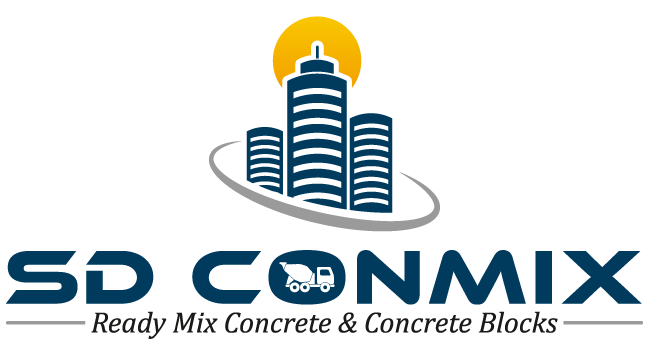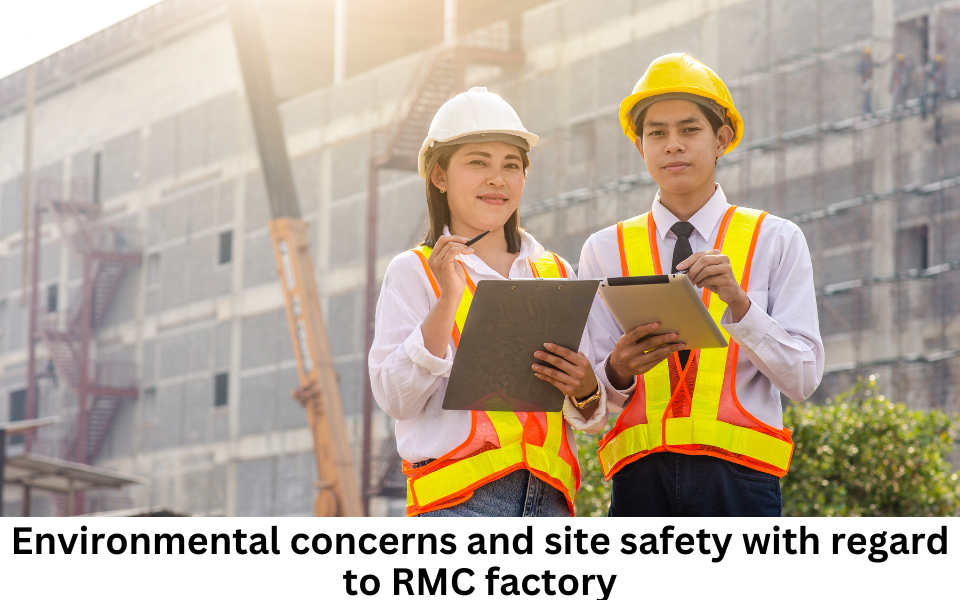Introduction
As with any civil engineering construction, safety is a top priority and the ‘Safety first’ rule must be adhered to at the RMC plant as well. Ready-mixed concrete plants are industrial operation that relies on heavy machinery and vehicles with a high risk of accidents. Therefore, worker safety must be a top priority. A written safety program should be adopted at the plant.
All RMC production facilities must take environmental considerations into account. The technologies used must be proven, cost-effective and reasonable to minimize the environmental impact as much as possible.
Site Safety
Earthing arrangement: Due to the high use of metal in RMC equipment, it is necessary to earth the equipment. The owner/producer must create the necessary earthing facility.
Air conditioning: The RMC plant control unit needs to be air-conditioned to allow the computer systems to operate smoothly and to create a good environment for operators and employees.
Water supply and drainage work: The water supply network must be established at the site for the availability of water at various locations. The site drainage for rainwater or spillages must also be provided to keep the plant operational.
Environmental Considerations
The RMC facility must strive to have plant operations well-planned and isolated from the residential or rural environment to minimize the impact.
Air and Noise Pollution and Vibration
Emissions of particulate matter (PPM) into the air, also referred to as dust emissions, are the primary air quality concern at the ready-mix plant site. PPM is made up of very fine particles that can be inhaled by people. Dust emissions can be minimized through plant enclosures, and dust suppression, which involves spraying water at the source to prevent dust from entering the atmosphere.
Noise
Noise is what we call “unwanted sound” and it is mainly the concern of the surrounding community and the employees of the plant. Although noise is a natural part of the RMC facility, there are many places where noise can be reduced viz by using plant designs and landscaping, plant berms, sound walls, and other appropriate technology and strategies.
Fuel, Oil and Chemicals
The risk of leakage and spillage can be reduced by appropriate storage facility design. The producer must take appropriate measures and implement best management practices to avoid leaks and spills and to prevent pollution of the surrounding environment and groundwater by accidental discharges and spillage of fuel, oil and chemicals.
Waste management
Waste is waste that is disposed of in an inefficient way, such as landfilled or disposed of in a quarried or back lot. A comprehensive waste management program will reduce the environmental impact of waste disposal. The reuse of the waste material reduces the burden of raw material extraction. The producer must implement processes, strategies and procedures that reduce the production of waste.
Training
The RMC producer’s responsibility is to train and educate employees/workers on the proper handling of materials, dangerous chemicals and environmental responsibility. The producer places great importance on on-site care and good hygiene, with the involvement of local communities.
Conclusion
The RMC industry is one of the fastest-growing and most popular industries in the world, but it also has its own unique set of occupational health and safety risks. Workers in this industry face these risks not only during concrete fabrication but also during concrete delivery to the site of construction.
Concrete has a significant environmental footprint. If you work in a concrete producer’s plant, you need to be well-versed with the environmental regulations to be adopted.
SD Conmix, the best manufacturer and supplier of ready-mix concrete provides quality concrete products and meets all safety and environment protection norms as per standards.
FAQs
Workers in ready-mix concrete manufacturing facilities can be exposed to a variety of occupational health hazards, such as: Eye, Skin and Respiratory Irritation from Exposure to Cement Dust
Excessive Exertion and Awkward Postures (Ergonomics)
Slips, Trips and Falls
Chemical Burns from Wet Concrete
Loss of Stability, Cutting and Severing
Concrete batching plants are one of the main contributors to air pollution in the form of particulate matter (PM), nitrogen oxides, and volatile organic compounds. Concrete batching plants also consume a large amount of water and produce waste that can lead to water pollution. SD Conmix meets the environmental protection norms as per the guidelines.
Wet concrete has corrosive, abrasive, and dehydrating properties. Dust from dry materials or hardened concrete or ready-mix concrete can irritate, cause dermatitis, and/or cause redness on exposed skin.
The results of several studies showed that the emissions from RMC factories are adversely affecting human health in a variety of ways, like itchy eyes, respiratory diseases like tuberculosis, chest discomfort, chronic bronchitis, asthma attacks, cardiovascular diseases and even premature death.

